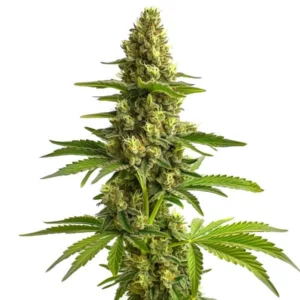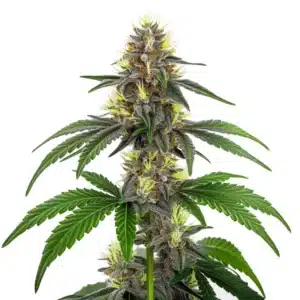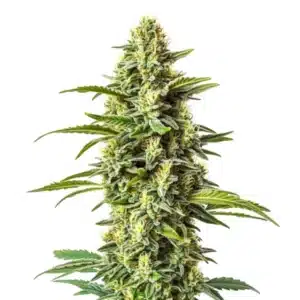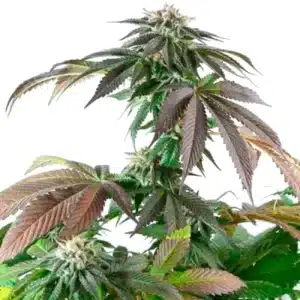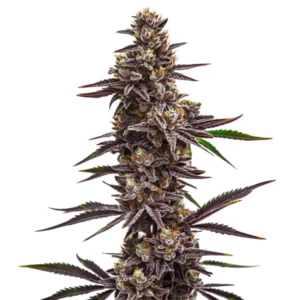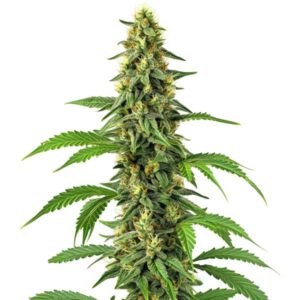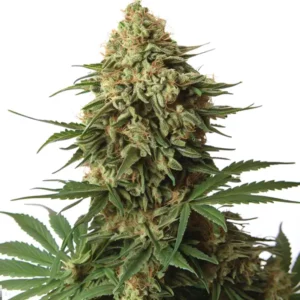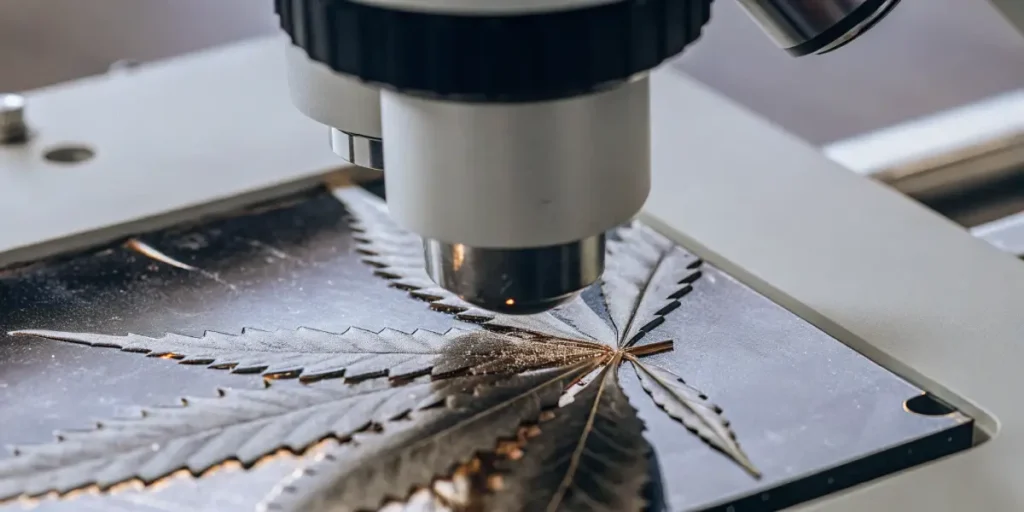
Aquaporins and Water Transport in Cannabis
When growing cannabis, water management is crucial. This is where aquaporins come into play. Aquaporins are microscopic channels in plant cells that help water move efficiently. Understanding aquaporins and water transport in cannabis is key to ensuring your plants get the moisture they need without overwatering, promoting healthier and more resilient growth.
Aquaporins play a role in cannabis water transport by facilitating the movement of water molecules. These tiny proteins are embedded in the cell membranes, acting as gateways. They allow water to pass through while blocking other substances, ensuring a steady flow of hydration to every part of the plant.
Recommended Strains
Gelato
|
|
THC | 27% (High) |
|
|
Type | Feminized |
|
|
Yield | High |
|
|
Phenotype | 50% Indica / 50% Sativa |
Bruce Banner #3
|
|
THC | 20% - 29% (High) |
|
|
Type | Feminized |
|
|
Yield | Medium |
|
|
Phenotype | 50% Indica / 50% Sativa |
Using aquaporins effectively can make a difference in your cannabis cultivation. By managing water transport mechanisms, you can optimize growth and yield. Whether you’re growing indoors or outdoors, knowing about aquaporins can help you make better decisions for your plants.
How Aquaporins Affect Cannabis Growth
The impact of aquaporins on cannabis hydration is significant. Proper water transport is vital for photosynthesis and nutrient uptake. Without efficient water transport, your cannabis plants can suffer from stress, leading to poor growth and lower yields.
Cannabis aquaporins gene expression can vary with environmental conditions. Factors like light, temperature, and humidity can influence how these proteins function. By controlling these factors, you can enhance aquaporin activity, promoting healthier plants.
Knowing the aquaporin function in cannabis cultivation is essential for optimizing plant health. By ensuring that these proteins are operating efficiently, growers can prevent common issues related to hydration, such as wilting or nutrient deficiencies. Aquaporins and water transport in cannabis work hand-in-hand to maintain the delicate balance of water within the plant.
Moreover, aquaporins play a critical role in regulating the plant’s internal water pressure, known as turgor pressure. This pressure is essential for maintaining the structural integrity of the plant, allowing leaves and stems to remain upright and robust. By facilitating efficient water transport, aquaporins help sustain this pressure, contributing to the overall vigor and resilience of cannabis plants.
Practical Tips for Managing Aquaporin Function
To maximize the benefit of aquaporins in your cannabis plants, consider these practical tips. First, ensure consistent watering schedules. Overwatering or underwatering can disrupt aquaporin function, affecting water transport mechanisms in cannabis plants.
Second, maintain optimal growing conditions. Cannabis strains like Bruce Banner 3 thrive when aquaporins are active. Keep your grow room temperature and humidity in check to support aquaporin activity.
Additionally, using mulch can help stabilize soil moisture levels, thus supporting aquaporins role in cannabis water transport. Mulch acts as a barrier, reducing water evaporation and ensuring that the roots have consistent access to moisture, which is crucial for aquaporin efficiency.
It’s also beneficial to regularly test the soil’s pH, as extreme pH levels can affect aquaporin functionality. Keeping the soil within the optimal pH range ensures that aquaporins and water transport in cannabis are not hindered, allowing for better water and nutrient uptake.
Promos & Deals
Choosing Cannabis Strains with Aquaporins in Mind
Not all cannabis strains will respond the same way to water transport facilitated by aquaporins. Knowing the traits of each strain can help you decide which might work best in your environment.
For example, the Gelato strain is known for its robust growth and ability to handle variable water conditions. Its genetic makeup enables it to make the most of aquaporin activity, ensuring efficient water transport.
When selecting strains, consider those with a genetic predisposition for strong water transport mechanisms in cannabis plants. Strains that naturally exhibit vigorous growth under varying environmental conditions are likely to have more active aquaporins, making them ideal for challenging climates.
Researching the cannabis aquaporins gene expression of different strains can provide insights into how they might perform in your specific growing conditions. Strains that have been bred for resilience and adaptability often have enhanced aquaporin activity, making them more reliable for consistent yields.

Adapting Cultivation Techniques
Adapting your cultivation techniques can further enhance aquaporin function. Consider employing hydroponic systems, which naturally optimize water use and can boost the efficiency of aquaporins.
Soil composition is another factor. Well-aerated soil helps maintain proper moisture levels, enabling aquaporins to function optimally. Adding perlite or vermiculite can improve soil aeration for better water movement.
Experimenting with different irrigation methods, such as drip irrigation, can also improve aquaporin function in cannabis cultivation. Drip systems provide precise control over water application, ensuring that plants receive exactly the right amount of moisture to facilitate efficient aquaporin activity.
Furthermore, employing organic soil amendments can enhance the microbial environment, supporting aquaporins role in cannabis water transport. Beneficial microbes can help break down organic matter, releasing nutrients that improve overall plant health and water transport efficiency.
FAQs on Aquaporins and Water Transport in Cannabis
What are aquaporins, and how do they work in cannabis?
Aquaporins are proteins in plant cells that help transport water. In cannabis, they are crucial for maintaining hydration. They act like tiny water channels, allowing water to move in and out of cells efficiently, supporting essential processes like nutrient uptake and photosynthesis.
In cannabis cultivation, ensuring that aquaporins function well can lead to healthier plants. By facilitating water movement, they help prevent issues such as waterlogging or dehydration, both of which can negatively impact plant growth and yield.
The aquaporins role in cannabis water transport is fundamental in maintaining plant vitality, especially in climates where water availability is inconsistent. By optimizing water flow, aquaporins ensure that even under stressful conditions, the plants can sustain their growth and productivity.
Knowing how aquaporins work allows growers to manipulate growing conditions in favor of their plants. By focusing on aquaporin activity, cultivators can reduce waste, improve water use efficiency, and ultimately achieve higher quality yields.
How can I enhance aquaporin activity in my cannabis plants?
To enhance aquaporin function, maintain consistent watering practices. Avoid overwatering, which can saturate the soil and inhibit water movement. Use a moisture meter to gauge the right time to water your plants.
Temperature and humidity control are also important. Cannabis plants thrive in conditions where aquaporins can operate efficiently. Maintain a stable environment to ensure your plants benefit from optimal water transport.
Incorporating foliar feeding can also aid in enhancing aquaporin activity. By applying nutrients directly to the leaves, you can support aquaporins role in cannabis water transport, as this method can improve nutrient uptake efficiency.
Additionally, employing stress-reducing practices, such as gradually acclimating plants to environmental changes, can help maintain aquaporin function. Minimizing stress helps stabilize aquaporin activity, ensuring consistent water transport and plant health.
Do different cannabis strains respond differently to aquaporin activity?
Yes, different strains have unique responses to aquaporin activity. Some, like Bruce Banner 3, are more adaptable to varying water conditions. Knowing these traits can help you select strains that align with your growing environment.
For growers in areas with fluctuating environmental conditions, strains like Blue Dream and Gelato are recommended. These strains have shown resilience and effective water transport capabilities.
Studying the genetic background of cannabis aquaporins gene expression can provide valuable insights into how different strains manage water transport. This knowledge can guide the selection of strains that are better suited to specific environmental conditions.
By selecting strains with a proven track record of effective aquaporin activity, growers can ensure more reliable outcomes in terms of plant health and yield, regardless of external challenges such as temperature fluctuations or inconsistent watering schedules.
Can environmental factors affect aquaporins in cannabis?
Environmental factors such as light, temperature, and humidity can significantly impact aquaporin function in cannabis plants. High temperatures can increase water loss, making efficient water transport even more crucial.
Managing these factors can enhance aquaporin activity. Use fans to regulate temperature and dehumidifiers to maintain optimal humidity, ensuring your cannabis plants make the most of their water transport mechanisms.
Regularly monitoring environmental conditions and making adjustments as necessary can help optimize aquaporins and water transport in cannabis. Consistent management of these factors supports the overall health and vitality of the plants.
By knowing the impact of aquaporins on cannabis hydration, growers can take proactive steps to mitigate environmental stressors, ensuring that plants remain hydrated and healthy throughout their growth cycle.
What are common signs of aquaporin malfunction in cannabis plants?
Common signs of aquaporin malfunction include drooping leaves, which can indicate inadequate water transport. Yellowing leaves might suggest overwatering, where water transport is disrupted by soil saturation.
Observing your plants regularly and adjusting your watering schedule can help address these issues. Ensuring aquaporins are functioning properly will support healthy growth and improve your cannabis yield.
Another sign of aquaporin malfunction might be stunted growth, as inefficient water transport mechanisms in cannabis plants can limit the availability of water and nutrients, which are crucial for development.
In severe cases, root rot can occur if aquaporins are not functioning due to prolonged overwatering. Keeping an eye out for these symptoms and responding promptly can help maintain aquaporin function and the overall health of your cannabis plants.



